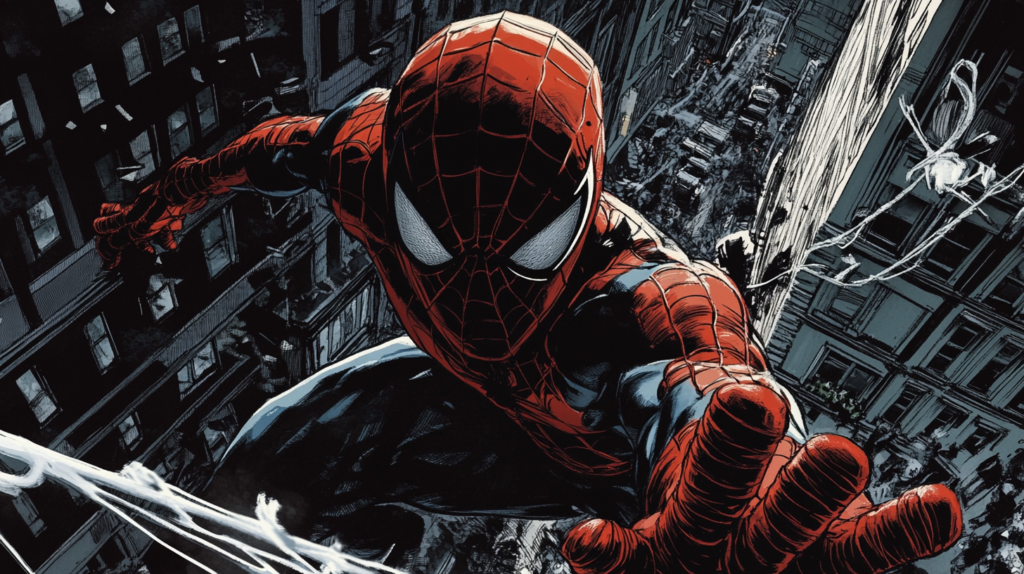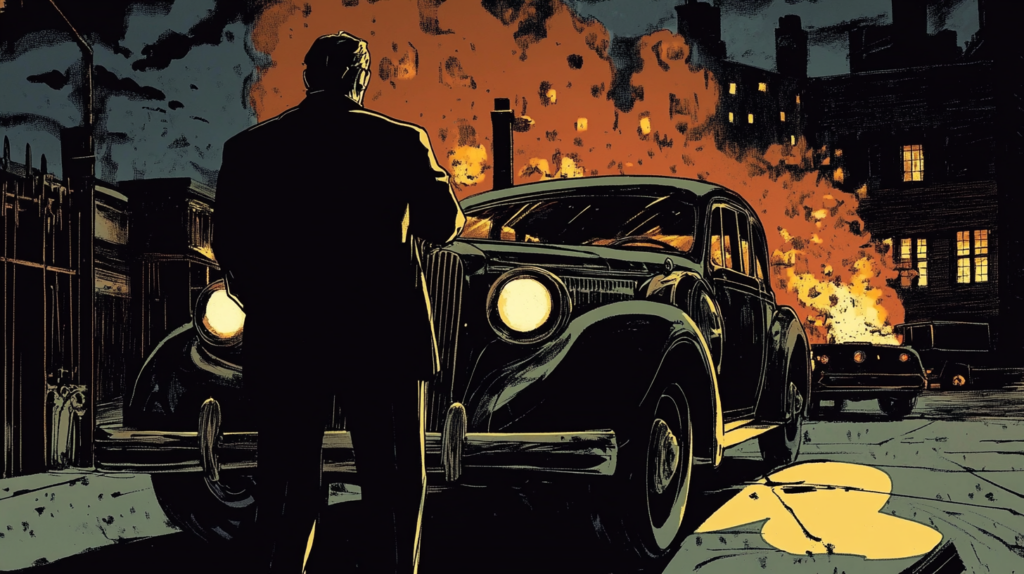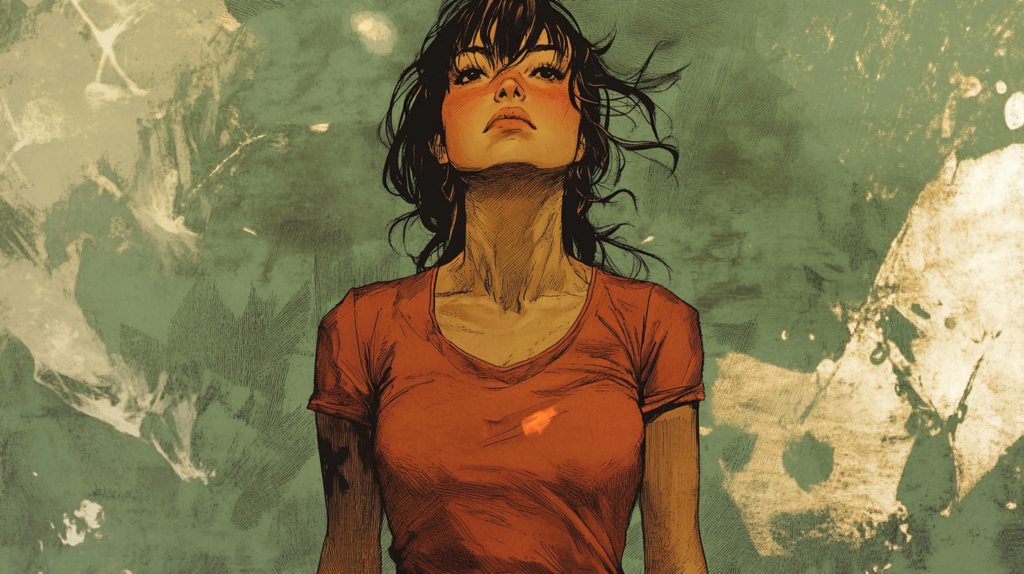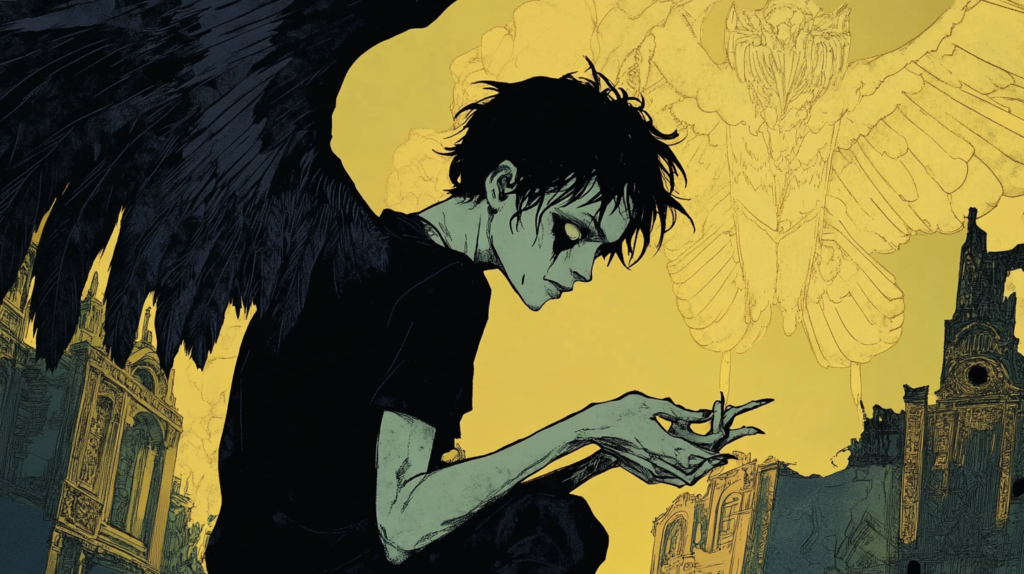The Bold Definition of Graphic Novels: Graphic novels are a unique form of storytelling that combines visual art and written narrative, offering readers a rich, immersive experience. Unlike traditional novels, which rely solely on words, graphic novels use illustrations to complement and enhance the story. They cover a wide range of genres and themes, from memoirs and historical accounts to science fiction and fantasy, making them a versatile and significant part of modern literature. As a cartoonist who has worked in this medium, I’ve seen how graphic novels bridge the gap between visual art and narrative, creating stories that resonate deeply with readers. This article defines graphic novels, explores their key characteristics, and highlights their growing significance in contemporary literature.
What Is a Graphic Novel?
A graphic novel is a book-length work that tells a story through a combination of sequential art and text. While they share similarities with comic books, graphic novels typically present a complete story with a clear beginning, middle, and end. They often tackle complex themes and narratives, making them suitable for both adult and younger audiences. Graphic novels are a format rather than a genre, meaning they can encompass a variety of genres like drama, memoir, fantasy, science fiction, and more.
Key Characteristics of Graphic Novels:
- Sequential Art: The story is told through a combination of illustrations arranged in panels, alongside dialogue, captions, and narration.
- Complex Narratives: Graphic novels often explore deep, multifaceted themes, presenting intricate character development and plotlines.
- Diverse Genres: Graphic novels cover a wide range of genres, including memoirs, historical fiction, fantasy, horror, science fiction, and non-fiction.
- Length: Graphic novels are generally longer than comic books, and they are usually published as a standalone book rather than in serialized issues.
Examples of Graphic Novels:
- “Maus” by Art Spiegelman: A Pulitzer Prize-winning graphic novel that recounts the Holocaust through the lens of animals as characters.
- “Persepolis” by Marjane Satrapi: A graphic novel memoir that tells the story of the author’s childhood during the Islamic Revolution in Iran.
- “Watchmen” by Alan Moore and Dave Gibbons: A graphic novel that deconstructs the superhero genre, blending mystery, political commentary, and psychological drama.

The Significance of Graphic Novels in Modern Literature
Graphic novels have grown in prominence over the past few decades, gaining recognition as a legitimate and important form of literature. They blend visual and textual storytelling in a way that enriches the reader’s experience, allowing for a deeper exploration of themes, emotions, and characters.
1. Bridging the Gap Between Visual Art and Literature
One of the most significant contributions of graphic novels is their ability to bridge the gap between visual art and traditional literature. By combining illustrations with text, graphic novels offer a multi-sensory storytelling experience that engages both the reader’s imagination and visual senses.
Example: In “The Arrival” by Shaun Tan, a wordless graphic novel, the story is told entirely through stunning, surreal illustrations. The absence of text allows the reader to interpret the story through visual cues, creating a unique and immersive experience.
Personal Insight: As a cartoonist, I find that the combination of visuals and text in graphic novels allows me to communicate emotions, ideas, and moods in ways that words alone might not capture. The imagery enhances the narrative, making the story more impactful.
2. Addressing Complex Themes and Topics
Graphic novels often tackle complex themes such as identity, trauma, politics, and social justice. The combination of text and art allows authors to delve into difficult or nuanced subjects in a way that is accessible and engaging.
Example: “Maus” by Art Spiegelman explores the horrors of the Holocaust through a powerful blend of graphic storytelling and memoir. The use of anthropomorphic animals to represent different ethnic groups adds an additional layer of symbolism and commentary to the narrative.
Personal Insight: I’ve seen how graphic novels can address serious themes while remaining engaging and approachable. Through visual metaphors and dynamic storytelling, graphic novels provide a medium to explore difficult topics in a way that resonates with readers on both an emotional and intellectual level.
3. Engaging Diverse Audiences
Graphic novels appeal to a wide range of readers, including those who may not typically be drawn to traditional novels. Their visual format makes them accessible to younger readers, reluctant readers, and those with different learning styles. At the same time, graphic novels are sophisticated enough to engage adult audiences with their depth and complexity.
Example: “Bone” by Jeff Smith is a beloved graphic novel series that appeals to both children and adults with its whimsical art, humor, and epic storytelling. It combines lighthearted adventures with darker, more mature themes, making it accessible to a broad audience.
Personal Insight: The visual nature of graphic novels allows me to connect with a diverse audience, including readers who may not enjoy traditional literature. The illustrations bring the story to life in a way that draws readers in, regardless of their age or background.
4. Enhancing Literary and Artistic Expression
Graphic novels allow for a unique form of artistic and literary expression that can’t be achieved through words or images alone. The interplay between text and illustration creates a rich, layered narrative that engages readers on multiple levels.
Example: In “Sandman” by Neil Gaiman, the intricate illustrations are as important as the text in conveying the dark, surreal atmosphere of the story. The art complements the complex narrative, enhancing the reader’s experience by adding visual depth to the abstract and philosophical themes explored in the story.
Personal Insight: As an artist, I love how graphic novels allow me to explore both visual and narrative storytelling. The two elements work together to create a deeper, more immersive experience for the reader, with the illustrations adding mood, symbolism, and emotion to the text.

Key Elements of Graphic Novels
Graphic novels combine various elements to create a cohesive and compelling story. These elements include sequential art, character development, visual symbolism, and the use of space and layout to guide the reader’s experience.
1. Sequential Art
At the core of graphic novels is sequential art, where illustrations are arranged in a specific sequence to convey the passage of time and the progression of the story. Panels, gutters (the spaces between panels), and layout choices all contribute to how the narrative unfolds.
Example: In “Watchmen”, the use of a nine-panel grid structure creates a sense of rhythm and control over the narrative, reflecting the tightly wound tension and complexity of the story. The layout becomes an essential part of the storytelling process.
Personal Insight: As a cartoonist, I pay close attention to the layout and sequence of panels in my work. The way the story flows from one panel to the next can create suspense, build emotional intensity, or slow down a moment for reflection, all of which contribute to the reader’s experience.
2. Character Development
Graphic novels often focus on character-driven stories, using both visual and textual elements to develop complex, relatable characters. Through facial expressions, body language, and dialogue, graphic novels can depict characters’ inner thoughts and emotions in a highly visual and engaging way.
Example: In “Persepolis”, Marjane Satrapi uses simple, expressive line drawings to portray her personal journey through childhood and adolescence during the Iranian Revolution. The combination of text and visuals allows readers to connect deeply with her emotional and psychological growth.
Personal Insight: I find that character development is enhanced in graphic novels through the use of visual cues. Facial expressions, gestures, and even the background environment can add layers of meaning to a character’s journey, allowing readers to connect with them on a deeper level.
3. Visual Symbolism
Graphic novels often use visual symbolism to convey abstract ideas, themes, or emotions that may not be immediately obvious through dialogue or narration. These symbols enrich the narrative by adding layers of meaning that the reader can interpret.
Example: In “Blankets” by Craig Thompson, the recurring use of blankets as a visual motif symbolizes comfort, warmth, and protection, but also the boundaries and limitations of the protagonist’s personal relationships. The visual metaphor evolves throughout the story, deepening the reader’s understanding of the character’s emotional state.
Personal Insight: I love incorporating visual symbolism into my graphic novel work. It allows me to communicate deeper themes and ideas without relying solely on words, giving readers a more immersive and thought-provoking experience.
4. Use of Space and Layout
The layout and use of space in graphic novels play a crucial role in guiding the reader’s eye and controlling the pace of the story. Artists use different panel sizes, shapes, and placements to create dynamic compositions that enhance the narrative flow.
Example: In “Building Stories” by Chris Ware, the unconventional layout of the graphic novel—consisting of various printed materials that can be read in any order—encourages readers to explore the narrative in a non-linear fashion, reflecting the fragmented, multi-faceted nature of memory and experience.
Personal Insight: I pay careful attention to how the layout of panels and the use of space affect the pacing and rhythm of my graphic novels. A well-placed pause or a large, open panel can create emotional impact, while tighter, more compressed layouts can build tension and urgency.

Genres and Themes in Graphic Novels
Graphic novels span a wide range of genres and themes, from superhero epics and science fiction adventures to personal memoirs and social commentary. This diversity makes them a versatile medium that appeals to different audiences and explores a variety of subjects.
1. Superhero Stories
Superhero graphic novels often explore themes of power, responsibility, and morality. While superhero comics are traditionally associated with serialized issues, many graphic novels in this genre provide more in-depth, self-contained stories that challenge the conventions of the genre.
Example: “The Dark Knight Returns” by Frank Miller reimagines the Batman mythos, presenting an older, darker Bruce Wayne struggling with his role in a dystopian Gotham. The graphic novel deconstructs the superhero genre, offering a more introspective take on the character.
2. Memoirs and Personal Narratives
Memoirs and personal narratives in graphic novels allow authors to tell autobiographical stories that reflect their personal experiences, often dealing with identity, trauma, and personal growth.
Example: “Fun Home” by Alison Bechdel is a graphic novel memoir that explores the author’s complicated relationship with her father and her own journey of self-discovery as a queer woman. The graphic novel format allows Bechdel to depict both personal and universal themes with emotional depth.
3. Science Fiction and Fantasy
Graphic novels in the science fiction and fantasy genres often explore imaginative worlds, speculative technologies, and complex societal issues through visually stunning settings and characters.
Example: “Saga” by Brian K. Vaughan and Fiona Staples is a science fiction/fantasy epic that combines space opera elements with a deeply personal story about love, family, and survival. The graphic novel’s art brings its fantastical world to life, making the narrative more immersive.
4. Historical Fiction and Non-Fiction
Graphic novels are also an effective medium for telling historical fiction and non-fiction stories, offering readers a way to engage with historical events through both text and visuals.
Example: “The Photographer” by Emmanuel Guibert is a graphic novel that combines photographs and illustrations to tell the story of a photographer accompanying a Doctors Without Borders mission in Afghanistan. The mix of visual media adds depth to the historical narrative.
The Growing Popularity and Recognition of Graphic Novels
Over the past few decades, graphic novels have gained widespread recognition and mainstream popularity, earning critical acclaim for their artistic and literary achievements. Today, they are considered an important part of modern literature, studied in schools and universities, and featured in literary awards.
1. Critical Acclaim and Awards
Graphic novels have received literary awards and accolades, solidifying their place as a legitimate form of literature. Works like “Maus”, which won the Pulitzer Prize, and “Persepolis”, which received numerous international awards, demonstrate the artistic and narrative power of the medium.
Example: Art Spiegelman’s “Maus” became the first graphic novel to win a Pulitzer Prize in 1992, marking a significant moment in the recognition of graphic novels as serious literature.
2. Academic Study and Literary Analysis
Graphic novels are increasingly being studied in academic settings, where they are analyzed for their narrative complexity, visual storytelling techniques, and cultural impact. They are taught in literature, art, and media studies courses, reflecting their growing significance in the literary world.
Example: Graphic novels like “Persepolis” and “Fun Home” are often included in university curricula, where they are studied alongside traditional novels for their unique ability to tell stories through a combination of text and images.
3. Expanding Readership
Graphic novels have found an ever-growing readership, appealing to both children and adults. The diversity of genres, themes, and artistic styles has made graphic novels a popular choice for readers of all ages and backgrounds, contributing to the expansion of the medium.
Example: The rise of graphic novels aimed at younger readers, such as “Smile” by Raina Telgemeier, has helped introduce new generations to the medium, while adult readers continue to seek out more mature graphic novels like “The Sandman” or “Blankets”.

The Bold Definition of Graphic Novels
Graphic novels have become a significant part of modern literature, offering a unique blend of visual and textual storytelling that engages readers in ways that traditional novels often cannot. Through their ability to tackle complex themes, appeal to diverse audiences, and bridge the gap between art and narrative, graphic novels have carved out a place in both the literary and artistic worlds. As they continue to gain recognition and popularity, graphic novels are reshaping how we understand storytelling and the power of visual narratives.
Final Thoughts:
As a cartoonist, I believe that graphic novels offer an unparalleled opportunity to tell stories that resonate on multiple levels. The combination of art and text creates a rich, immersive experience for readers, allowing for deeper exploration of characters, themes, and emotions.
Call to Action:
For readers, I encourage you to explore the wide range of graphic novels available, from memoirs and historical fiction to science fiction and fantasy. For fellow artists and writers, consider how the graphic novel format can enhance your storytelling, providing a unique platform for both visual and literary expression. Share your favorite graphic novels in the comments below, and let’s celebrate this powerful form of modern literature!





One Comment